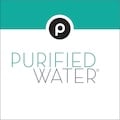Stay in the Know
Drink up. Our water is pure H2O from a trusted source. Which makes it all the more refreshing.
Answer a few simple questions about the Publix bottled water you purchased, and we'll tell you about the
- bottling plant location
- water type
- water source
- treatment method
- purity testing details and
- production and "best by" dates.
To learn more about the different types of bottled water, see the FDA's consumer bottled water guide*.
*By clicking this link, you will leave publix.com and enter the FDA's site which they operate and control.
Find out where your water comes from
To get more details on the Publix water that you have, please answer a few quick questions:
1. What type of bottled water do you have?





